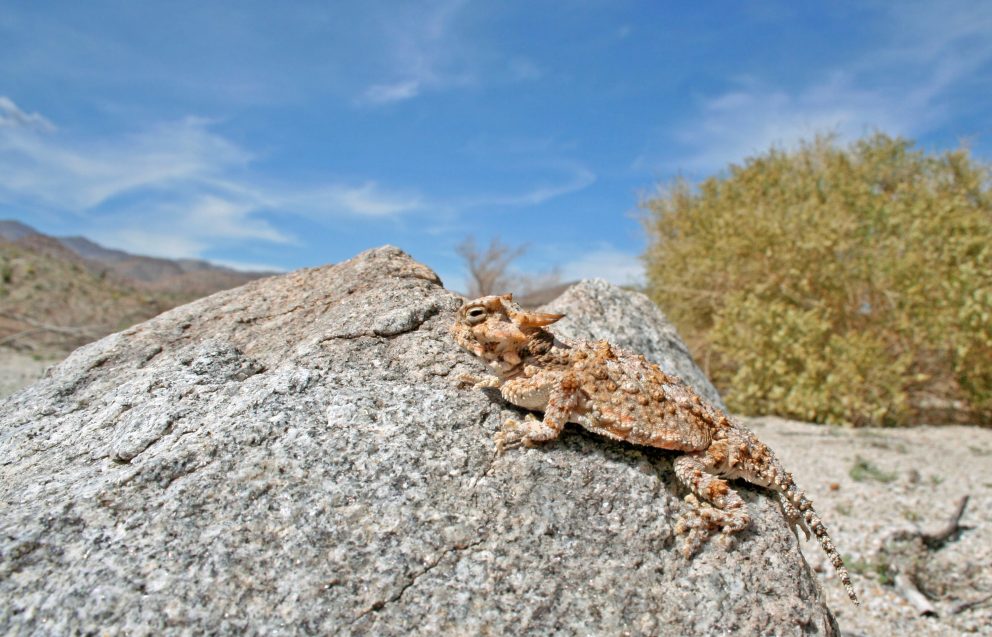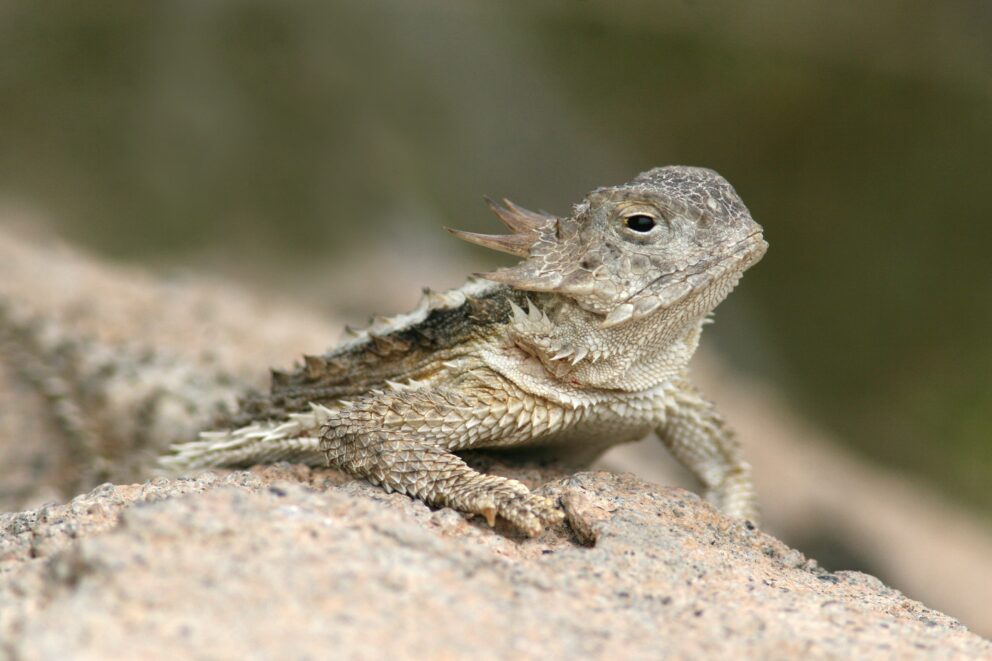- SCIENTIFIC NAME
- Phrynosoma platyrhinos
- CLASSIFICATION
- Reptile
- LIFE SPAN
- 5-8 Years
- STATE CONSERVATION STATUS
-
- Priority Species
- Unprotected
- FEDERAL CONSERVATION STATUS
- Least Concern
- GAME STATUS
- Non-Game
- Washoe
- Humboldt
- Pershing
- Churchill
- Mineral
- Lyon
- Douglas
- Carson City
- Storey
- Elko
- Lander
- Eureka
- White Pine
- Esmeralda
- Nye
- Lincoln
- Clark
Habitat & Range
The Desert Horned Lizard can be found throughout Nevada, and in many different types of habitats. They like sandy flats, alluvial fans, washes, sand dunes, and among rocky areas.
- Cold desert shrubland and sagebrush
- Grasslands
- Warm desert riparian
Threats
- Habitat Degradation
- Habitat Destruction
- Overcollection
Natural History
Desert Horned Lizards are ant specialists. The bulk of their diet is made up of large-bodied harvester ants that they use their specialized sticky tongues to capture. When ants are not available, they may eat other insects, spiders, and vegetation. These lizards can endure drought years by limiting its growth, reproduction, and above-ground activities. They will bury themselves in the soil when inactive to keep cool and to conceal themselves.
Being such a flat and round lizard means the Desert Horned Lizard is not fast or agile. However, it uses its body type to its advantage to protect itself from predators. Snakes have a hard time with these lizards because their wide bodies. When pursued they can inflate their bodies making them look larger. Their horns and their coloration make them excellent at camouflaging with their desert habitat.
Fun Facts














